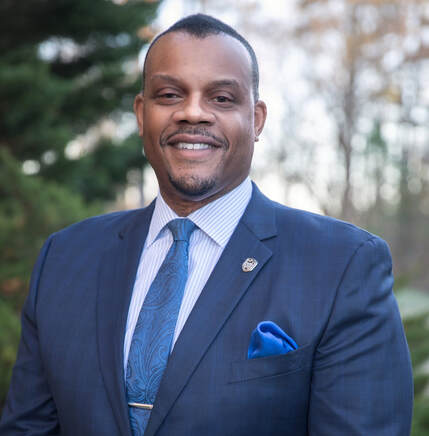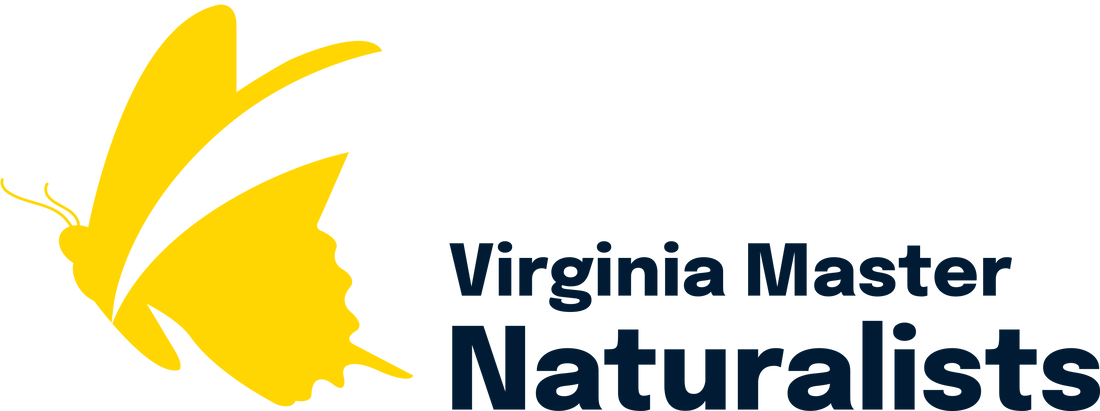I first met George Braxton last December, just a few weeks after he was hired into the new role of Chief Diversity and Inclusion Officer at the Virginia Department of Wildlife Resources (DWR). Since then, we have been serving together on the advisory committee for the DWR Wildlife Viewing Plan, a new management plan that will guide the agency in engaging wildlife viewers and promoting their needs. Recently, we sat down (via Zoom) to talk about his role in the agency and DWR’s goals related to diversity and inclusion.
--Michelle Prysby
--Michelle Prysby
 George Braxton, Chief Diversity and Inclusion Officer at the Virginia Department of Wildlife Resources. Photo by VDWR.
George Braxton, Chief Diversity and Inclusion Officer at the Virginia Department of Wildlife Resources. Photo by VDWR. The Chief Diversity and Inclusion Officer role came about when Ryan Brown, the new DWR director, highlighted diversity as a focus for the agency. In addition, Governor Ralph Northam appointed Dr. Janice Underwood as Virginia’s Chief Diversity Officer, the first cabinet-level position of this kind not only in the Commonwealth, but in the nation. Dr. Underwood is working to build a strategic plan for inclusion across more than 100 state agencies. In his role at DWR, Braxton will lead the development and implementation of objectives for diversity and inclusion specific to DWR.
Braxton sees his role as focusing both inward, on diversity within the agency, and outward, on broadening the agency’s constituency. “The agency has a history of not being the most diverse organization. People hire those they identify with.” The goals for internal diversity are to have a diverse workforce that reflects Virginia, to have an inclusive environment in which people of different backgrounds feel they can reach their potential, and to have an equitable organization in which people have the tools and access they need to succeed. A first step has been to empanel an ‘inclusive excellence council’ made up of people throughout DWR. The council will be creating a strategic plan that is focused on the experience for the employee and works toward aligning the agency’s culture with its goals.
Looking outward, Braxton wants to expand the agency’s audience. “Hunters, anglers, boaters, recreational shooters, and wildlife viewers—that’s our universe of people. Previously, we have not had a strategic approach to reaching out to underrepresented groups.” He is looking to partner with outdoor affinity groups like OutdoorAfro, Latino Outdoors, and Women Outdoors to find opportunities to help them move their agenda forward while also helping to connect them to DWR.
“There are some fairly daunting challenges,” says Braxton. Expanding the agency’s “universe of people” means recruiting more people of color, women, and other underrepresented populations into all the wildlife recreation activities. “In Virginia, much of our ethnically and racially diverse populations live in urban areas, and hunters aren’t usually third generation inner city people.” There are also barriers of economics and access to equipment.
Braxton is hopeful that the external and internal efforts will work in tandem. “We are introducing new populations to these activities like hunting and boating. For example, from a gender perspective, women are the fastest growing population in the outdoor sports, but they are not well-represented in the Conservation Police Officer force, so the next step might be to create opportunities for that career move.” Likewise, wildlife viewing is something that people can do even in urban areas, so efforts to help people grow their wildlife viewing interest into a hobby and then a career may aid efforts to diversify the agency’s workforce.
When asked about the role of volunteers like Virginia Master Naturalists in the agency’s efforts, Braxton says that volunteers can help provide more “touch points” with a wide variety of people. He is very interested in finding ways for us to support each other with diversity and inclusion efforts. “We do have a platform for communications, but it reaches our current constituency. I definitely want volunteers to know we are really reliant on organizations like the Virginia Master Naturalist program to reach everyone else. We are reliant on everyone to articulate the interest we have in making sure underrepresented groups take advantage of what Virginia has to offer in terms of the outdoors.”
Want to get more information on wildlife in Virginia and the conservation and education work of DWR? Subscribe to the Notes from the Field email list.
Braxton sees his role as focusing both inward, on diversity within the agency, and outward, on broadening the agency’s constituency. “The agency has a history of not being the most diverse organization. People hire those they identify with.” The goals for internal diversity are to have a diverse workforce that reflects Virginia, to have an inclusive environment in which people of different backgrounds feel they can reach their potential, and to have an equitable organization in which people have the tools and access they need to succeed. A first step has been to empanel an ‘inclusive excellence council’ made up of people throughout DWR. The council will be creating a strategic plan that is focused on the experience for the employee and works toward aligning the agency’s culture with its goals.
Looking outward, Braxton wants to expand the agency’s audience. “Hunters, anglers, boaters, recreational shooters, and wildlife viewers—that’s our universe of people. Previously, we have not had a strategic approach to reaching out to underrepresented groups.” He is looking to partner with outdoor affinity groups like OutdoorAfro, Latino Outdoors, and Women Outdoors to find opportunities to help them move their agenda forward while also helping to connect them to DWR.
“There are some fairly daunting challenges,” says Braxton. Expanding the agency’s “universe of people” means recruiting more people of color, women, and other underrepresented populations into all the wildlife recreation activities. “In Virginia, much of our ethnically and racially diverse populations live in urban areas, and hunters aren’t usually third generation inner city people.” There are also barriers of economics and access to equipment.
Braxton is hopeful that the external and internal efforts will work in tandem. “We are introducing new populations to these activities like hunting and boating. For example, from a gender perspective, women are the fastest growing population in the outdoor sports, but they are not well-represented in the Conservation Police Officer force, so the next step might be to create opportunities for that career move.” Likewise, wildlife viewing is something that people can do even in urban areas, so efforts to help people grow their wildlife viewing interest into a hobby and then a career may aid efforts to diversify the agency’s workforce.
When asked about the role of volunteers like Virginia Master Naturalists in the agency’s efforts, Braxton says that volunteers can help provide more “touch points” with a wide variety of people. He is very interested in finding ways for us to support each other with diversity and inclusion efforts. “We do have a platform for communications, but it reaches our current constituency. I definitely want volunteers to know we are really reliant on organizations like the Virginia Master Naturalist program to reach everyone else. We are reliant on everyone to articulate the interest we have in making sure underrepresented groups take advantage of what Virginia has to offer in terms of the outdoors.”
Want to get more information on wildlife in Virginia and the conservation and education work of DWR? Subscribe to the Notes from the Field email list.


 RSS Feed
RSS Feed